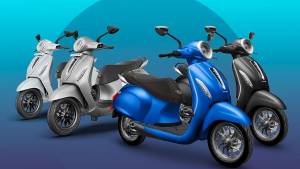MAHLE reduces winter cruising range loss for electric vehicles by up to 20 percent
Modern electric vehicles present complex challenges for efficient thermal management throughout the year. It should place as light a load on the drive train battery as possible, particularly in wintertime. MAHLE has developed a compact and economical system based on a heat pump (Integrated Thermal System - ITS) that can increase the winter cruising range by up to 20 percent. In addition to significantly reducing battery power consumption, it is easy to control and can be readily adapted to future vehicle architectures.
Due to the lack of steadily available waste heat from the engine, most electric vehicles today rely on direct resistive heating by electric heaters to heat cabin and traction battery in wintertime. This extra load on the drive train battery in cold temperatures can reduce the cruising range of a fully charged electric vehicle by up to half. In summer as well, the cruising range is shortened by the additional energy required for cooling the drive train battery and the interior of the vehicle.
In field tests with a compact electric car, MAHLE has demonstrated that its ITS reduces the loss of cruising range substantially, especially at cold ambient temperatures. The original vehicle used, equipped with conventional electric heating, started with a cruising range of 100 kilometers. When the vehicle was equipped with the ITS, the cruising range increased to 116 kilometers.
"With the ITS from MAHLE, we can improve cruising range by between 7 and 20 percent, depending on the design, which drastically reduces the loss of cruising range in wintertime in particular," says Laurent Art, Director Advanced Engineering Thermal Management at MAHLE.
The ITS from MAHLE combines various thermal components into one system that functions in several modes. Central to its architecture is a semi-hermetic refrigerant circuit, comprising a chiller, a coolant-cooled condenser (i-condenser), a thermal expansion valve, and an electric drive compressor. The i-condenser and the chiller have the same function as the condenser and evaporator in a conventional refrigerant circuit. In this case, however, instead of exchanging heat with air, the refrigerant exchanges heat with the coolant, thus generating hot and cold coolant flows. The ITS uses R1234yf as a refrigerant and the conventional vehicle coolant as the medium for heat transport between the cooling circuit and the various heat sources and sinks in the vehicle.
In addition to the low cost and environmental benefits, the ITS presents design flexibility and adaptability as added advantages. Tests for control optimization and other purposes are currently being run in the MAHLE climatic wind tunnel with the ITS installed in the vehicle. Together with American OEMs, MAHLE is working on implementing additional performance and cost optimizations.
DISCLAIMER: This information is published as per the press release sent to us. It has not been verified or ratified by OVERDRIVE.
Related Stories
Top Stories
Latest Videos
Most Popular
- Upcoming Mahindra XUV 3XO: All you need to know
- New Suzuki Swift spotted testing
- Budget Sportbike Showdown: Kawasaki Ninja 500 vs Aprilia RS 457 vs Yamaha YZF-R3
- Nissan Magnite EZ-Shift review - is the AMT any good?
- 2024 Hyundai Creta vs Toyota Urban Cruiser Hyryder vs Skoda Kushaq comparison review - the hype is real?











